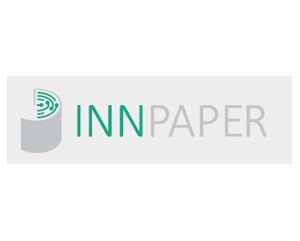INNPAPER
We consume electronics faster than ever, discarding them every few years. Smartphones, tablets, TVs… are made up of plastic and metal, materials that are difficult to recycle.This is a growing environmental and social problem: the electronic waste or e-waste. At Innpaperwe want to develop electronic devices using paper: a material that is recyclable, reusable, cheap and flexible. In the future, this technology can help reduce the amount of e-waste we produce, creating more environmentally friendly electronics.
The project:
Currently we produce nearly 50 million metric tonnes of electronic waste each year.
This poses a growing environmental and social concern. INNPAPER is a European innovation project that aims to reduce the environmental impact of electronics, designing a new electronic technology basedon paper: a recyclable, reusable and renewable material.
Modifying the cellulose nanofibers that compose paper, the project will produce tailored papers and inks that will be used to manufacture electronic items such as batteries, displays, antennas and circuits.
Altogether, they will form a configurable electronic board, ready to be used by the packaging, security, food and health industry in smart labels, and drug, caffeine and disease detection devices.
To transfer the technology developed by the project to the industrial market, INNPAPER gathers a team of both academic and industrial partners, that aims to make an impact in the flexible and printed electronics industry. This is a growing market, widely used in many industrial sectors, from health to security.
Furthermore, the proliferation of the Internet of Things devices will boost this market in the next decades. Paper electronics pose a sustainable alternative for the flexible plastic electronics that will shape the market in the years to come.
We will modify the fibres of paper to give themspecific features: conducting electricity, resistinghigher temperatures, shielding from magneticfields…Using tailored inks, our technologies allow us tocreate differenciated areas within the samepaper, integrating the different electronic items within the paper itself.Giving rise to circuits, batteries, sensors, displays, and many other electronic items.
We will design the usual items found in electronics (such as circuits, batteries or antennas) using paper as the main material. Altogether, these items will form a configurable electronic board, adaptable to be used by industries in different fields.
To monitor the environmental impact and analyse the viability of the INNPAPER technology, the project comprises the whole chain of production: from the raw materials, to the assembly of the final devices:
Renewable resources:
We will perform life-cycle analysis, that evaluate the environmental impacts of the extraction of the raw materials, their processing, the manufacture of the study-cases and their recyclability and reusability.
Sustainable production:
At INNPAPER, we will produce all the prototypes in a pilotassembly line that uses the latest industrial processes available,such as roll-to-roll processing. These methods reduce the amount of material needed, lowering the carbon footprint.
Recyclable design:
To minimise the amount of waste generated by our devices, we will design them to be as recyclable and reusable as possible. To do this, we will conduct recyclability analysis of our products, to use them to re-manufacture processes.
Partnership:
The INNPAPER consortium consists of 15 partners from 6 Member States plus one partner from Norway (Member of the European Economic Area), with well-balanced participation of RTOs (5 partners), industrial companies (3 partners) and SMEs (7 partners) all of them considered renowned research and industrial experts in their respective sectors. The multidisciplinary INNPAPER consortium is highly complementary and covers the full range of needed skills along the value chain from the paper developers/manufacturers (AALTO University, VTT, GUARRO CASAS (subsidiary of ARJOWIGGINS)), devices developers/manufacturers (CIDETEC, CEA, AIX MARSEILLE Université, VARTA MICROBATTERY, YNVISIBLE), end-users (SKANEM, SECURETEC DETEKTIONS-SYSTEME, BIOLAN MICROBIOSENSORES, CORIS BIOCONCEPT), and partners skilled in sustainable solutions (VERTECH GROUP) exploitation (SPINVERSE) and communication (SCIENSEED) activities. This consortium has been constituted with the ambition of establishing a productive synergy among partners’ expertise and covering all the competences needed to achieve the INNPAPER vision and technical objectives.
Our role:
CIDETEC will be the project coordinator and will lead WP3 (Devices development and optimisation), being in charge of the following activities: 1) Development of printable inks for batteries and electrochromic devices and corresponding preliminary printing tests. 2) Assembly and pre-characterisation of paper-based electrochromic devices at lab-scale. 3) Development of paper-based PoC immunoassays. CIDETEC will also participate in WP4 (Integration and manufacturing of the common electronic platform and use-cases), WP6 (Eco-design, LCA, reuse and recycling) and WP7 (Communication, dissemination and exploitation). In particular, CIDETEC will be very active in the definition of the dissemination activities and responsible of the IPR management.

Hasiera: 01 | 01 | 2018
Amaiera: 30 | 06 | 2021
Aurrekontua: 7.410.000 €
Finantzatzaile

Has received funding from the European Commission under the Horizon 2020 research and innovation programme (H2020-NMBP-PILOTS-2017, topic PILOTS-05-2017).
Argitalpenak
Brochure INNPAPER
DeskargatuSektoreak
- Osasuna zaintzea
Arlo teknologikoak
- There are no technological fields












